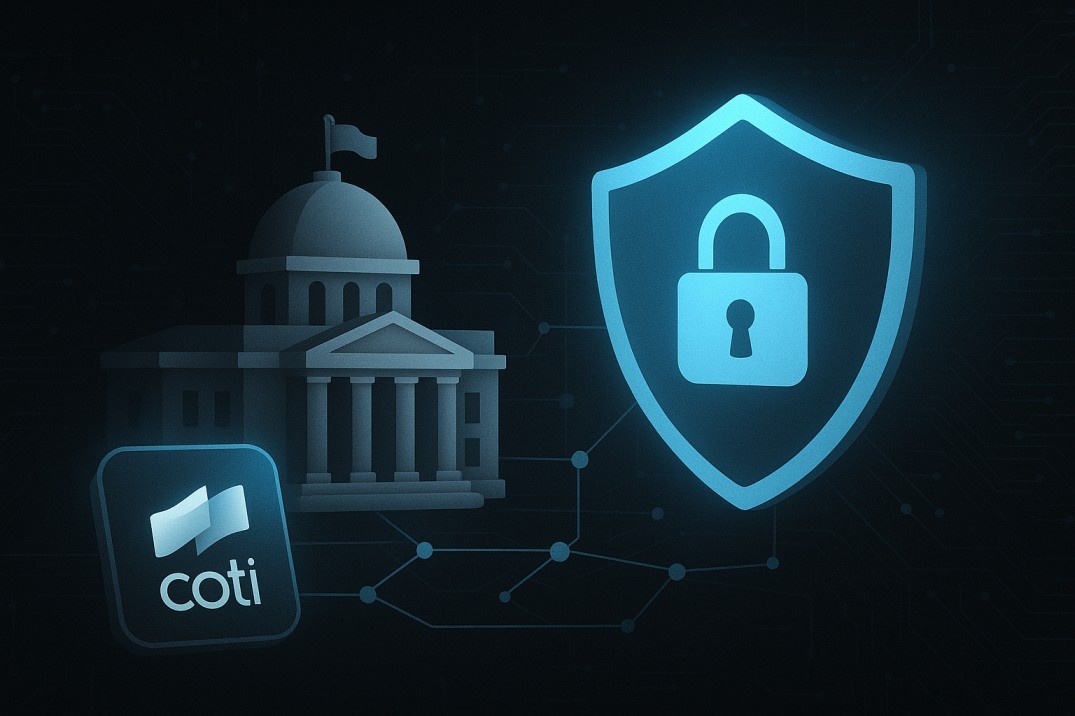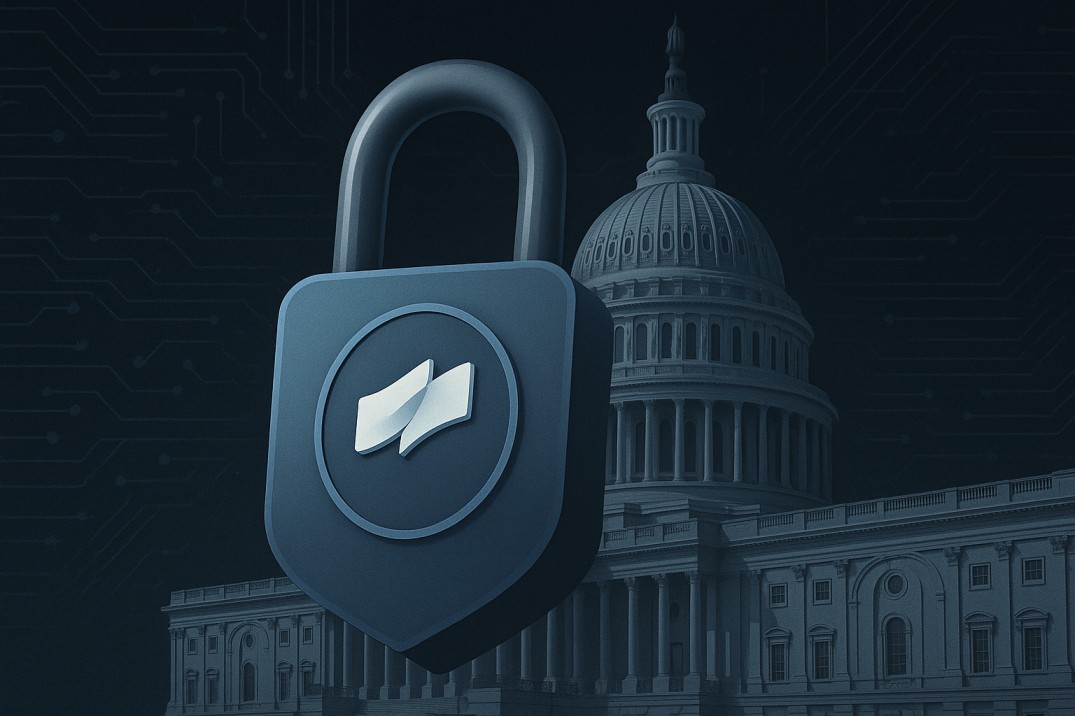TL;DR
- Governments are increasingly exploring central bank digital currencies (CBDCs), but their biggest concern remains: How can transaction integrity, privacy and compliance coexist?
- COTI's cryptographic architecture-particularly its implementation of garbled circuits-offers a way to verify transactions and enforce rules while keeping user data confidential.
- COTI is working with major institutions: it has been selected by the European Central Bank (ECB) as a "Pioneer Partner" in its Digital Euro project.
- It also partnered with the Bank of Israel in its "Digital Shekel" challenge, demonstrating how privacy-centric blockchain tech can support regulated currency innovation.
- For governments looking at digital fiat, COTI may represent an infrastructure option that blends trust, transparency and confidentiality-the three pillars many CBDC designs need.
As the world moves toward digital forms of money, one thing becomes clear: It's not just about issuing digital currency. It's about trusting that currency in the hands of the public, institutions and regulators alike. Governments want a system that supports efficiency, auditability and oversight - and yet respects privacy and personal freedom. The question is: can blockchain technology deliver that?
Enter COTI. With a privacy-first architecture built for blockchain, COTI is positioning itself to fill a gap in the CBDC conversation: the trust layer. That layer is not simply about decentralisation or tokenomics. It's about building a digital monetary system that governments can deploy with confidence-and citizens will use without fear. In this article, we'll explore:
- Why governments see blockchain as a solution and the hurdles they face;
- What COTI offers in terms of privacy, compliance and performance;
- Key milestones of COTI's engagements with central banks;
- What this means for the future of crypto and government money;
- And the risks and open questions that remain.
Why Governments Are Turning to Digital Currencies - and Why It's Challenging

The Appeal of CBDCs
Central banks around the globe are investigating CBDCs because they promise:
- Faster, cheaper payments domestically and across borders
- Greater financial inclusion by reaching underserved populations
- Enhanced programmability of money (e.g., conditional payments, micropayments)
- Better data-driven policy tools and reduced reliance on cash
The Trust Challenge
Yet shifting to digital currencies is not trivial. Governments must tackle:
- Privacy vs. Surveillance - Too much transparency risks exposing citizens; too much privacy risks abuse and illicit finance.
- Operational resilience - The infrastructure must support millions (or billions) of transactions, securely and with zero downtime.
- Regulatory compliance - Anti-money-laundering (AML), Know-Your-Customer (KYC), origin checks must be possible without undermining fundamental rights.
- Interoperability & scalability - The system must integrate with existing banking, payments, and cross-border networks.
- Public trust - If citizens view digital fiat as another means of surveillance, adoption will suffer.
Privacy as a Non-Negotiable
For governments, a CBDC that lacks proper privacy measures may face backlash. Citizens still value control over personal information. At the same time, regulators demand transparency and traceability. This "privacy trilemma" (privacy, compliance, scale) is real - and any infrastructure that can help meet all three has a significant chance of being adopted.
What COTI Brings to the Table
Privacy Through Garbled Circuits
At the heart of COTI's infrastructure is the use of garbled circuits, a cryptographic technique that allows data to be processed without revealing its contents. COTI allows for:
- Confidential smart contracts - where inputs/outputs are encrypted but still verifiable
- Selective disclosure - entities can choose what information to reveal and to whom
- Auditable integrity - even though data is private, it remains verifiable
For example: a government might require verification that funds are eligible for a conditional payment (such as delivering goods) without knowing the identities of all parties involved. COTI's approach aims to support exactly these flows.
Performance, Scalability & Compliance
COTI has emphasised its architecture is built for scale and regulatory contexts. It's not only privacy-focused, but efficient, which is key for a system intended for national-scale deployment. The technology supports auditability, permissioning and selective visibility - all important for monetary authorities.
Real-World Central Bank Engagements

Bank of Israel
COTI was selected as part of the Bank of Israel's "Digital Shekel Challenge". According to the Bank's announcement, the experiment emphasises privacy, modular architecture and real use cases.
From the announcement:
This positions COTI as a very rare crypto-project with direct central-bank sandbox experience.
European Central Bank
In May 2025, COTI was included as a Pioneer Partner in the ECB's Digital Euro initiative. The ECB's statement confirms that among the private participants, COTI is identified as "Tchain LTD, COTI (P)" in the Pioneer list. COTI's role centres on exploring how "conditional payments" can be achieved in a digital euro system using privacy-preserving technology.
This puts COTI in a frontline position of the CBDC infrastructure conversation in a major currency area.
This Is Important: Governments + Crypto = Game Changer
Digital Fiat Meets Crypto Infrastructure
Traditionally, crypto projects and public-money infrastructure moved on separate tracks. With COTI, that boundary blurs. It demonstrates that blockchain infrastructure can align with regulatory and institutional requirements while still delivering benefits often associated with crypto (programmability, decentralisation, cost-efficiency).
Privacy as a Strategic Advantage, Not a Liability
Many privacy-oriented chains struggle for mainstream adoption because of regulatory baggage. COTI's selective disclosure model reframes privacy as regulatory-compatible-not anonymous-by-default. That compliance-friendly approach is crucial for institutional adoption.
Bridge Between Public Sector and Web3
By participating in central bank sandbox initiatives, COTI gains experience, credibility and institutional exposure. The learnings feed back into its product roadmap-and the product roadmap supports future government deployments. In other words: a positive feedback loop.
Infrastructure Readiness for the Future
When digital currencies mature and governments move to launch them, the infrastructure won't be invented overnight. Projects already engaged in real-world CBDC experiments will likely be ahead of the curve-and COTI is one of them.
What Governments Might Gain from Using COTI
- Confidentiality with accountability: Financial flows stay private for individuals and businesses, but authorities retain proof of legitimacy when needed.
- Reduced cost and improved performance: COTI's architecture aims for lower overhead than many competing privacy solutions, making national-scale deployment more feasible.
- Programmable money with built-in controls: Conditional payment logic (e.g., subsidies, rebates, conditional asset transfers) becomes feasible without compromising privacy.
- Interoperability with existing systems: Because COTI supports standard smart contract tooling and aligns with institutional practices, barriers to integration drop.
Challenges & Open Questions
Governance & Oversight
Participation in CBDCs means navigating complex regulatory, political and technical dynamics. Even with strong infrastructure, deploying national digital currency implicates fiscal policy, banking structure and international cooperation.
Sink or Swim by Adoption
Infrastructure alone isn't enough-success depends on adoption by commercial banks, fintechs, payment service providers, merchants and users. COTI's technical readiness must align with ecosystem readiness.
Privacy vs. Compliance Tensions
While selective disclosure is promising, implementation details matter. Who holds keys to disclose? Under what conditions is data revealed? These are political as well as technical questions.
Systemic Risk & Resilience
CBDCs operate at national scale. They must remain robust under stress, attack, or outage. While blockchain may offer advantages, integrating it with critical financial infrastructure has unique challenges.
Final Thought
Governments face a historic opportunity: to transform money itself into a digital, programmable instrument that serves public needs better. But the window for establishing architecture, frameworks and trust is narrow.
COTI may represent one of the rare infrastructure options that brings together privacy, compliance and performance, at a time when all three are required. Its engagements with the Bank of Israel and the ECB signal that it is not just another crypto project, but a contender for the infrastructure layer governments might adopt. Whether COTI will become part of a digital-fiat runway remains uncertain-nothing is guaranteed in crypto or central banking. But based on its position today, one conclusion stands: if governments are serious about safe, private, programmable money, they cannot ignore infrastructure like COTI's.
The next era of digital currency won't just be about tokens; it will be about trust. And in that arena, COTI appears to be making its move.











